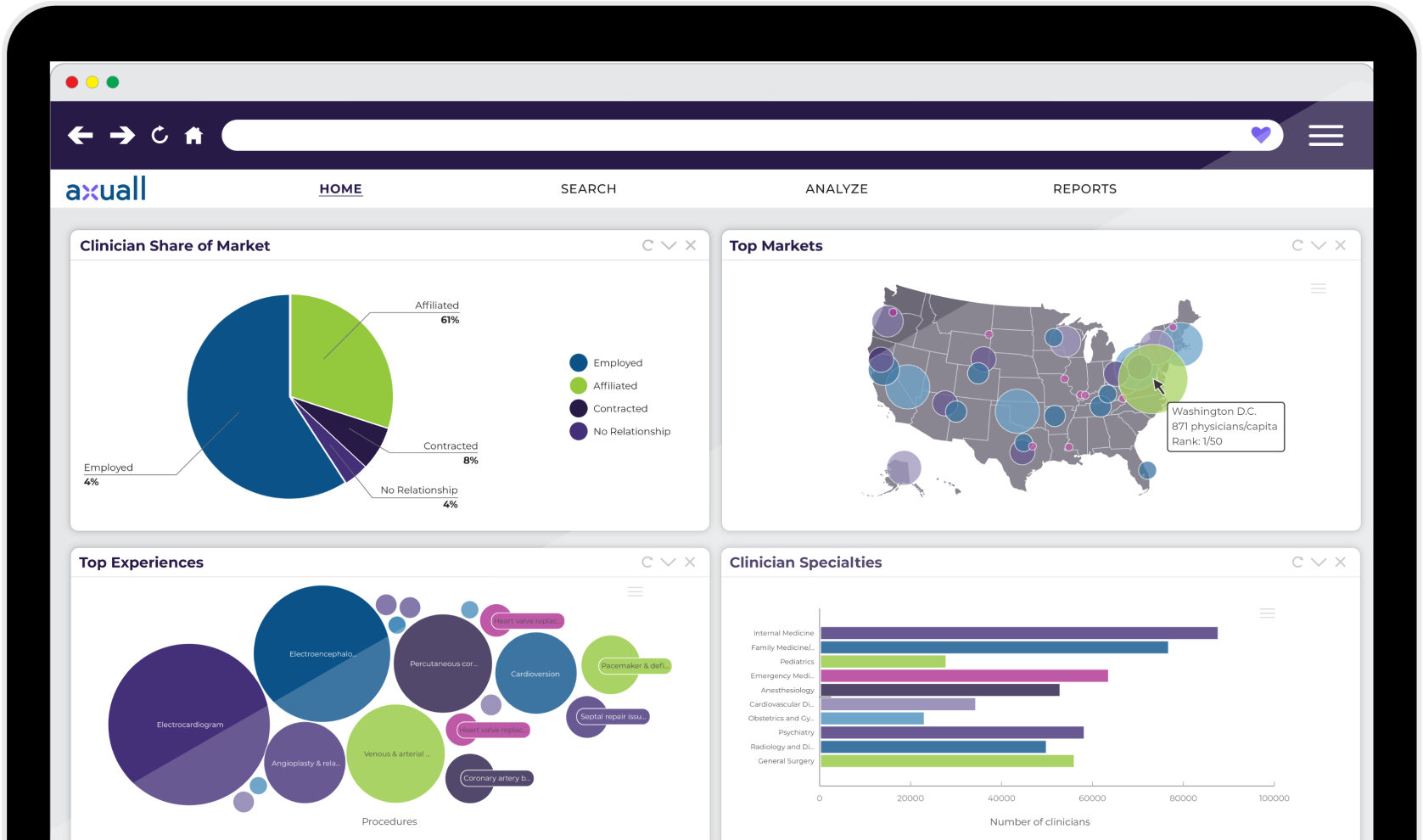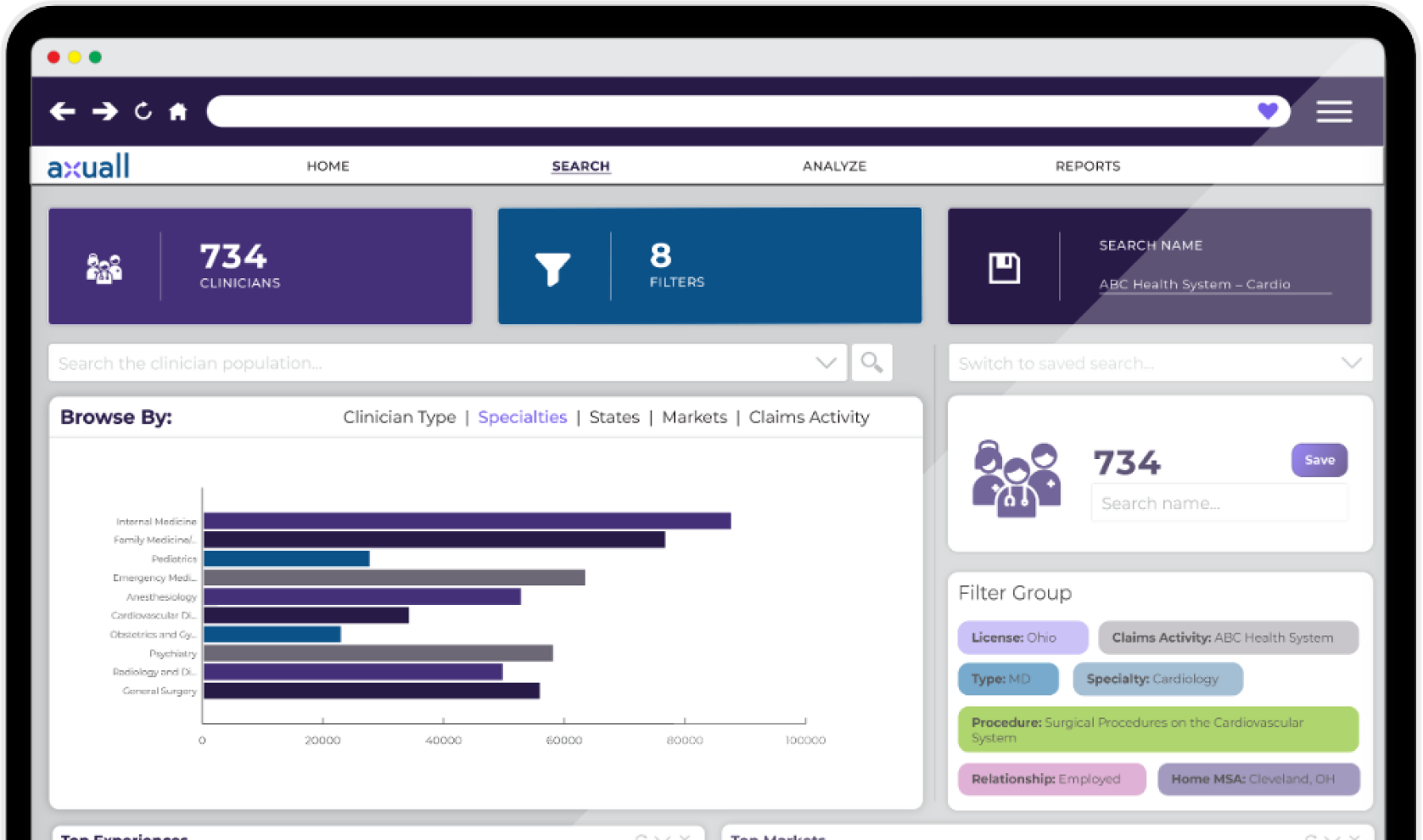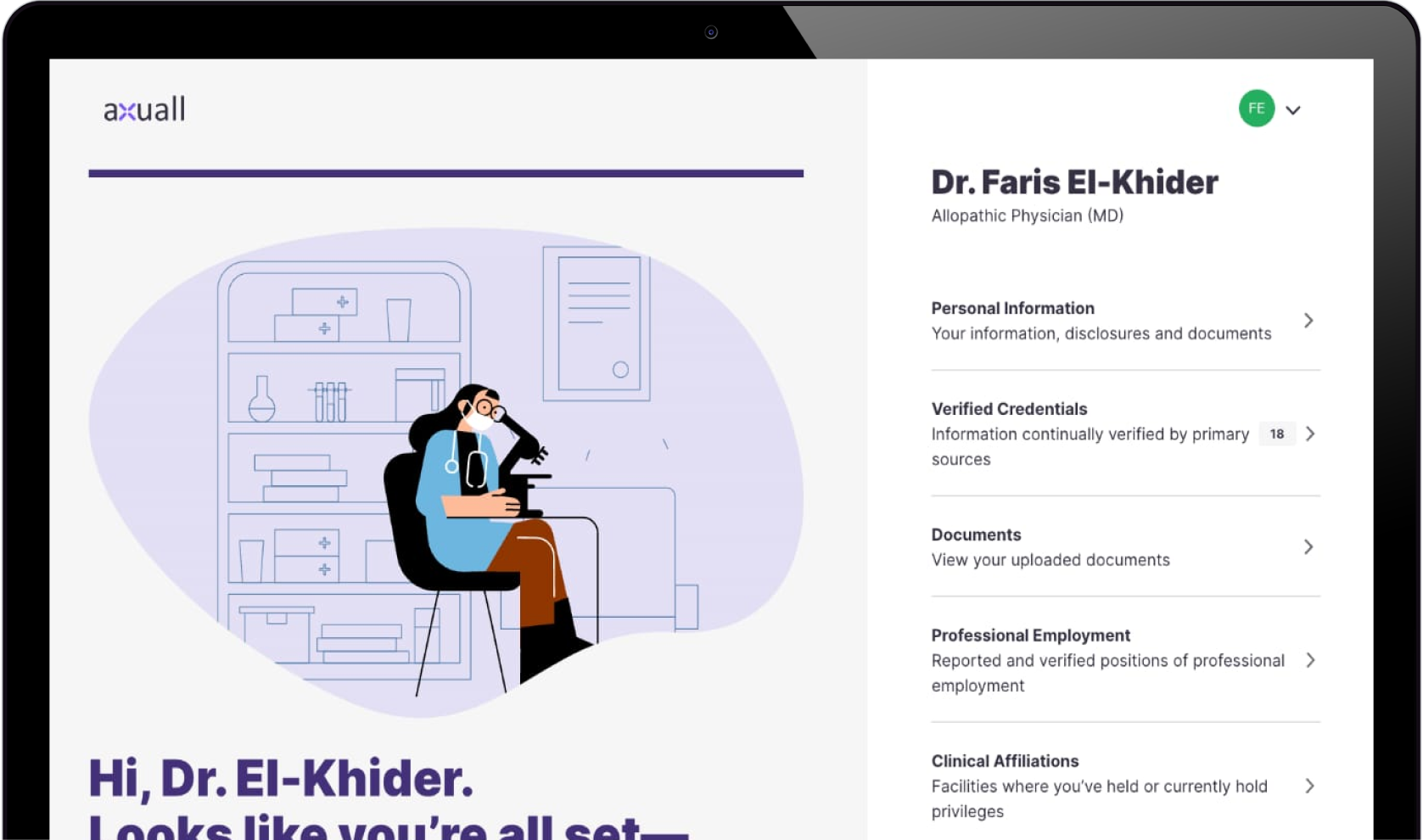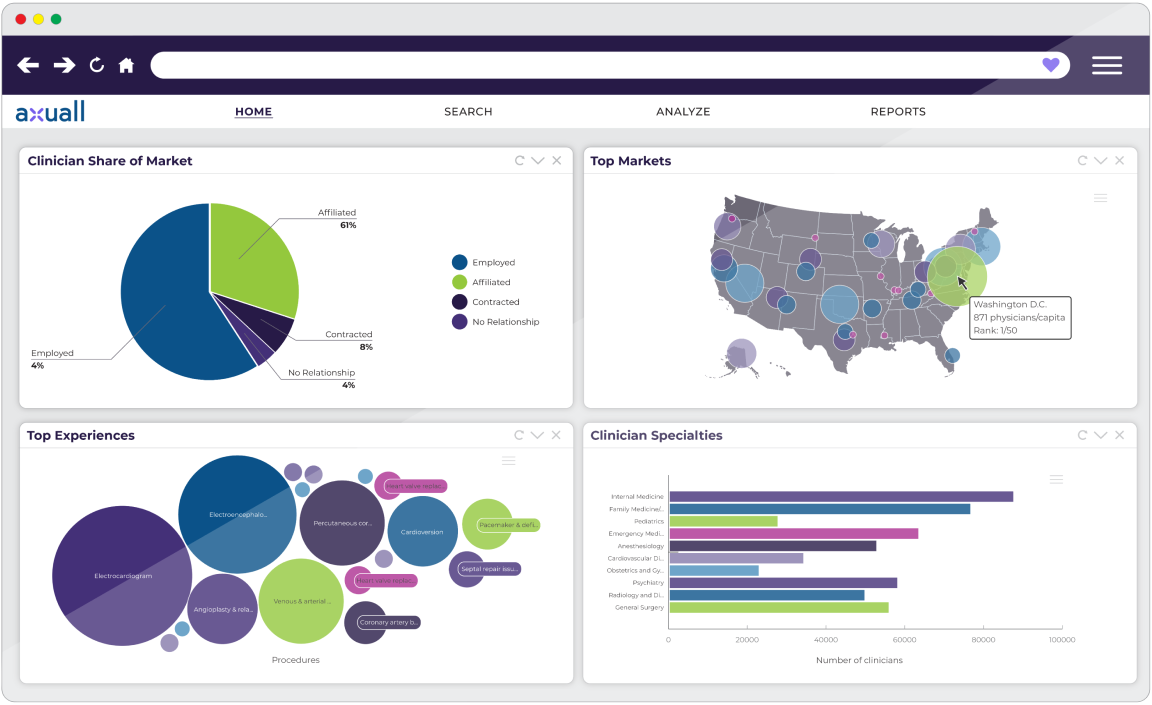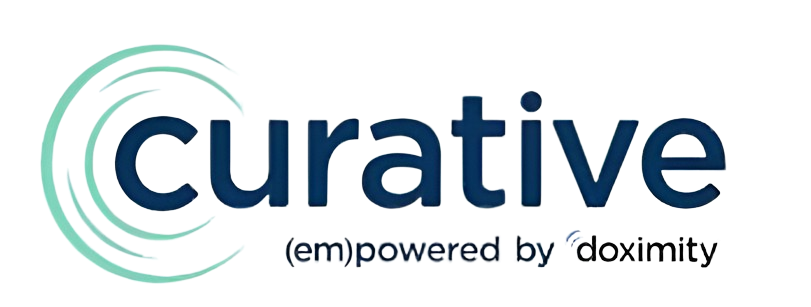A next-generation solution
for healthcare leaders
Clinical workforce intelligence is the pioneering practice of leveraging verified, real-time clinician data to power the planning, recruiting, onboarding, and optimization of healthcare workforces.
Developed through years of collective wisdom from seasoned industry leaders, organizations across the industry can finally make meaningful and informed decisions about their operations — stepping into the future of operational excellence.
